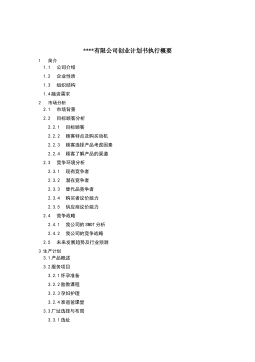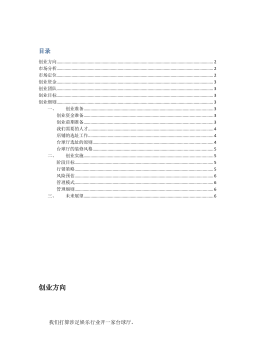示踪气体衰减法测定居室通风量的改进研究
VIP免费
摘 要
有效的自然通风不但可以降低能耗,而且可以提供清新的自然空气来改善室
内热环境、有效排出室内污染物,提高室内空气品质。随着社会的进步和发展,
人们对室内空气品质的要求越来越高,室内空气品质与人们健康的关系也越来越
受到重视,其定量确定更为学者们研究关注的热点。示踪气体方法测定房间通风
量是众多方法中比较常用且较为准确的方法,但以往研究中,受示踪气体种类、
释放量的大小、示踪气体与室内空气的混合程度、测量方法选择、测点布置、数
据处理方法、房间几何结构及室外气象参数等影响,使该方法在准确测定房间通
风量方面产生较大误差,如何提高示踪气体准确测量自然通风量的问题,对房间
通风量的研究具有很重要的意义。
为研究一般气流组织下标准房间的示踪气体更准确的测定方法,选择一办公
室为实验研究对象,特搭建一实验系统,采用鼓风门提供房间定量机械通风量作
为实验标准风量,对采用二氧化碳示踪气体衰减法的测量方法及其改进进行了实
验研究。
实验中,通过定义不稳定度|S|≤2%,可确定释放阶段搅拌时间、初始浓度 C0、
显著衰减所需时间;利用房间浓度不均匀系数 KC,定量分析房间示踪气体与空气
混合均匀程度,并得出示踪气体释放阶段,在满足|S|≤2%且浓度不均匀系数 KC≤
10%的情况下,采用一台风扇摇头搅拌为好。实验及数值模拟结果表明,在实验条
件下,以保证室内外浓度差 200~350ppm 为原则确定示踪气体释放量,此时测得
的房间通风量较为准确。衰减初始阶段,浓度均匀性受门窗开启形式、气流组织、
换气次数的影响,室内浓度波动较大,但之后的衰减过程较为均匀,受以上因素
影响较小;整个衰减阶段 KC均小于 10%,满足均匀性要求。利用实验采用平均浓
度求换气次数和各点换气次数的平均值与实验标准通风量的误差均超过了 10%,
而位于通风路径上靠近排风 1/3~1/2L 处,且垂直高度在 1.1~2.0m 的测点,所得
测量精度较高,其误差在 10%以内。自然通风实测中,考虑气流不确定性、不稳
定性、室内人员开启门窗的生活习惯不同,在现场测点有限的情况下,将测点放
置在房间中心位置是比较合理的。
在数据处理方面,利用衰减法中显著衰减段的浓度实验数据,采用本文提出
的积分参数迭代方法进行数据处理,与通常计算相比,测点测量平均误差可由原
来的 30%减小至 5%~10%左右,测量精度明显提高。本实验研究表明,采用显著
衰减段积分参数迭代法进行数据处理时,测点分别位于通风路径中点、房间中心
位置,或采用多点测量浓度平均值时,获得实际通风量即标准风量 Q0与实测值 Q
之间关系分别为 Q0=(0.95~1.05)Q,Q0=(0.94~1.10)Q,Q0=(0.94~1.12)Q。自然通
风量测定时,利用上述修正系数和实测值,便可获得房间实际通风量。采用风压
系数法获得理论风量 Q’ 与利用上述方法获得的实际通风量 Q0关系为
Q0=(1.02~1.18)Q’,即可利用实验所获修正系数与理论计算值获得实际通风量。
综上所述,对于独立房间,采用二氧化碳示踪气体方法测定通风量时,通过
对释放量大小的确定,测点布置及数据处理方法的改进,其获得的测量结果精度
明显提高。研究成果为现场实测自然通风量提供了改进的测量方法。
关键词:示踪气体 衰减法 不稳定度 浓度不均匀系数 测点布置
数据处理 积分参数迭代法 数值模拟
ABSTRACT
Effective natural ventilation can not only reduce energy consumption, but also can
provide fresh air to improve indoor thermal environment, discharge indoor pollutants
effectively and improve indoor air quality. Along with social progress and the
increasingly demand for indoor air quality, the relationship between indoor air quality
and human health caughtmore attention, especially theventilationquantitative. The tracer
gas method for air ventilation of room is more commonly used and accurate. However
the type of tracer gas, the emission amount, the uniform distribution of tracer gas
concentration, measurement method,the sampling position,the data processing
method,the room geometry and outdoor meteorological parameters can cause biase in
the result of air ventilation quantity determination.So it is important to measure accurate
ventilation rate quantity by tracer gas technique.
An office room is selectedfor studying tracer gas method in the general airflow
standard room. An experimental system is built to study tracer gas method.This study
took blast doors for mechanical ventilation and took carbon dioxideas decay tracer gas
to analyze.
Mixing time, initial concentration C0 of the release phase and settling time of
rapid decay period aredetermined by defining the instability coefficient | S | less than
2%.To analyzemixing uniformity oftrace gasconcentrationquantitatively, concentration
coefficient of uniformity KC is used. Using an oscillating fan can meet the
requirementsin a single room as |S| less than 2% and KC less than 10%.The research
with numerical simulation and experiments show that under the experimental conditions,
it is more accurate and reasonable when the tracer gas emissions to ensure the
concentration difference between inside and outside of 200ppm to 350ppm . It will
come up with great concentration fluctuation at the beginning of decey stage. The
concentration uniformity is effected by doors and windows open status, airflow and air
change rate.But during the decay process, KC is less than 10%, the indoor measurement
points have more uniform concentration even under the influence of the factors
mentioned above.The results show that the average concentration and sampling points
are not representative for the room ventilation rate, while the optimal sample position to
determine theventilation rate is 1/3 ~ 1/2L away from air outletandthe vertical height in
the 1.1m to 2.0m, the higher accuracy of the measurement error is within 10%.For
natural ventilation, considering air flow uncertainty, instability, the person’s different
living habits of opening doors and windows, it is more reasonable to set point at the
center of the room.
With data processing, collecting experimental data of the rapid decay period and
combining integral parameter iterative method,the average bias of the representative
pointsis reduced from 30% with the traditional calculation method to 5% ~ 10%,the
measurement accuracy is significantly improved.The results with integral parameter
iterative method to the mid-point of the ventilation path, the center point of the room
and the average value of the multi-points, the relationship between the actual value of
Q0 and the measured value of Q: Q0= (0.95 ~ 1.05) Q, Q0 = (0.90 ~ 1.10) Q, Q0 = (0.94 ~
1.12) Q.Using the correction coefficient in natural ventilation, the actual value of
ventilation can be obtained.Wind pressure coefficient method to calculate the value of
ventilation, the relationship between theoretical value Q ' and actual value Q0 is Q0 =
(1.02~1.18) Q’,the actual ventilation can be obtained by correction coefficient and the
calculated value.
In summary, the tracer gas method for a single room’s air ventilation, which
determined by size of emission, the arrangement of measuring points and improved data
processing method can be greatly improved the accuracy of the measurement results.
The research provides an improved measuring method for the measureing natural
ventilation rate.
Key word: tracer gas, instability, concentration coefficient of
uniformity, point positioning, data processing, integration
parameter iterative method, numerical simulation
目 录
中文摘要
ABSTRACT
第一章 绪论 ......................................................... 1
1.1 课题来源及研究意义 ............................................. 1
1.2 国内外居室通风量测定方法研究现状 ............................... 2
1.3 示踪气体测定方法研究现状 ....................................... 3
1.3.1 示踪气体种类 ............................................... 3
1.3.2 示踪气体浓度测试仪器 ....................................... 5
1.3.3 浓度测点布置与测定时间 ..................................... 5
1.3.4 数据处理方法介绍 ........................................... 6
1.3.5 示踪气体测量方法存在的不足及限制条件 ....................... 7
1.3.6 已有改进方法 ............................................... 7
1.4 本课题的思考以及主要研究内容 ................................... 8
1.4.1 进一步改进示踪气体测试方法的思考 ........................... 8
1.4.2 本课题主要研究内容 ......................................... 9
1.4.3 研究关键技术及研究路线 .................................... 10
第二章 示踪气体法风量测量原理及数据处理理论分析 ................... 11
2.1 示踪气体测量基本原理 .......................................... 11
2.1.1 风量测量的质量守恒原理 .................................... 11
2.1.2 各示踪气体测量方法原理 .................................... 11
2.2 示踪气体浓度均匀性及稳定性判据 ................................ 13
2.2.1 浓度混合均匀判定法则 ...................................... 14
2.2.2 浓度稳定时间判定法则 ...................................... 16
2.3 数据处理理论分析 .............................................. 17
2.3.1 数据处理方法理论基础 ...................................... 17
2.3.2 国标法 .................................................... 18
2.3.3 差分法 .................................................... 18
2.3.4 稳态法 .................................................... 19
2.3.5 非线性回归法 .............................................. 19
2.3.6 差分参数迭代法 ............................................ 19
2.4 本章小结 ...................................................... 21
第三章 测点布置及其均匀性实验研究 .................................. 23
3.1 实验原理及研究对象介绍 ........................................ 23
3.2 示踪气体测量方法实验系统搭建 .................................. 24
3.2.1 测试仪器及其仪器主要性能 .................................. 24
3.2.2 实验系统搭建 .............................................. 25
3.2.3 实验风量范围确定 .......................................... 28
3.2.4 示踪气体浓度检测仪 ........................................ 29
3.3 实验方案设计 .................................................. 31
3.3.1 实验目的 .................................................. 31
3.3.2 实验方案 .................................................. 32
3.3.3 实验步骤 .................................................. 34
3.4 释放阶段室内示踪气体稳定时间及浓度均匀性分析 .................. 35
3.4.1 不同搅拌形式对搅拌稳定时间与浓度均匀性的影响分析 .......... 35
3.4.2 释放量大小对搅拌稳定时间及浓度均匀性的影响分析 ............ 40
3.5 衰减阶段室内示踪气体衰减时间及浓度均匀性分析 .................. 41
3.5.1 释放量大小对室内显著衰减时间及浓度均匀性影响分析 .......... 41
3.5.2 渗透风量测量时浓度均匀性分析 .............................. 44
3.5.3 不同窗户开启形式浓度均匀性与衰减时间分析 .................. 46
3.6 实验数据的处理方法及测点布置改进研究 .......................... 49
3.6.1 现有数据处理方法结果对比分析 .............................. 49
3.6.2 采用显著衰减段数据处理方法 ................................ 51
3.6.3 积分参数迭代方法的提出 .................................... 54
3.6.4 室内测点布置改进研究 ...................................... 61
3.7 本章小结 ...................................................... 64
第四章 CFD 在示踪气体衰减法中的应用研究 ............................. 67
4.1 数值模拟方法的介绍 ............................................ 67
4.1.1 数学模型理论基础 .......................................... 67
4.1.2 湍流模型及计算方法 ........................................ 68
4.2 建模及边界条件确定 ............................................ 68
4.2.1 物理模型的建立 ............................................ 68
4.2.2 网格生成及边界条件的确定 .................................. 70
4.3 数值模拟验证及其实验研究应用 .................................. 70
4.3.1 数值模拟结果验证 .......................................... 71
4.3.2 室内各测点浓度特性及其通风量模拟结果与分析 ................ 72
4.3.3 衰减法典型工况分析 ........................................ 75
4.3.4 不同房间释放量大小模拟结果及分析 .......................... 80
4.4 本章小结 ...................................................... 81
第五章 自然通风测量方法及其实验研究 ................................ 83
5.1 居室自然通风测量浓度均匀性及衰减时间分析 ...................... 83
5.2 自然通风时实际风量的确定 ...................................... 87
5.2.1 基于现场自然通风量测定的实际风量确定与分析 ................ 87
5.2.2 基于理论自然风量计算的实际风量确定与分析 .................. 90
5.3 本章小结 ...................................................... 90
第六章 结论与展望 .................................................. 92
6.1 结论 .......................................................... 92
6.2 居室通风量现场测定推荐方法 .................................... 93
6.3 有待继续研究的内容 ............................................ 94
参考文献 ........................................................... 95
在读期间公开发表的论文和承担科研项目及取得成果 ..................... 99
致谢 .............................................................. 100
第一章 绪论
1
第一章 绪论
1.1 课题来源及研究意义
人的一生超过 80%的时间是在室内度过的,由于人体呼出的 CO2、室内装饰
材料释放的各种污染物以及人员设备的散湿都会使室内的空气质量恶化,长期持
续地暴露在室内空气污染的环境中,会导致人体出现头晕、呕吐等症状,严重者
可导致过敏性疾病等。有效的自然通风不但可以减少传统空调制冷系统的使用、
降低能耗,而且还可以提供清新的自然空气来改善室内热环境、有效排出室内污
染物,提高室内空气品质,更有益于人们的身心健康,提高工作效率和满足人们
亲近自然、回归自然的心理需求。随着社会的进步和发展,人们对室内空气品质
的要求越来越高,室内空气品质与人体健康的关系也越来越受到人们的重视。本
论文主要是以室内空气品质与儿童健康这一课题出发,以研究测定儿童居室通风
量、晚间居室渗透风量等为背景,通过研究居室通风量的定量测定方法为研究儿
童房间室内空气品质与儿童健康的关系奠定坚实基础。自然通风是节约能量、获
得室内较好的空气品质、改善人们健康环境的最佳选择之一,因此如何合理地利
用和控制自然通风环境、以测试手段获得房间真实准确的自然通风量值目前仍是
一个非常迫切需要解决的问题。
综上,为解决上述这个非常棘手的问题,以更好地合理地应用自然通风,非
常有必要对自然通风量的测试方法进行深入研究。目前通过理论模型预测通风量
的研究很多,但实际建筑现场实测自然通风的方法并不多,获取居室通风量的方
法常有风速直接测量法、压差法、有序通道测量法[1]-[2]、示踪气体法、数值模拟法。
其中示踪气体测量方法已经在国内外得到了广泛的应用,它不仅能测量房间通风
量、室内气流分布、排污效率、室内污染物的扩散情况、空气龄、空调系统的漏
风量、排气罩的排气效率等,同时在通风道、矿井的漏风量测量中也得到了很好
的应用。示踪气体测量方法不但能定性,而且能定量分析研究对象,为我们提供
独特的较为理想的准确的检测手段,且测量原理简单,操作简便,具有较高的精
度,有其他测量方法无法替代的优点,非常适用于实验研究和小空间的房间通风
量现场测量。
在采用示踪气体测量方法现场测定房间通风量的过程中,由于受示踪气体种
类、释放量的大小、示踪气体与室内空气的混合程度、测量方法的选择、测点的
布置、数据处理方法、房间几何结构及室外气象参数等的影响,使该方法在准确
示踪气体衰减法测定居室通风量的改进研究
2
测定房间通风量方面产生较大误差,所以如何采用示踪气体方法进行准确测定,
对房间通风量的研究具有很重要的意义。这一研究课题也同时是为室内空气品质
与儿童健康课题中所涉及的入室检测房间通风量提供合理的现场实测方案。
1.2 国内外居室通风量测定方法研究现状
目前测定居室通风量的方法有:风速直接测量法、有序通道法[1]-[2]、压差测量
法[3]、数值模拟法、示踪气体测量法。
风速直接测量法。该方法通过获得开口处面积及热线风速仪等仪器测得的开
口处平均风速,求得房间的通风量,该方法要求空气经过被测开口时的风场均匀、
稳定,在实测过程中由于房间开口处空气流动的不稳定性,各测点处风速不均,
导致较大的测量误差,其通风量的测定结果误差可达到 20%~25%[ 3 ]。
有序通道测量法。有序通道测量法是对 1个或多个排风口设置短管,然后利
用风速直接测量法进行风速测定的通风量测量方法,为提高测试精度,一般建议
仅设置 1个排风口,这样短管内可保证较大的稳定的被测风速,避免因小风速和
截面分布不均引起的测试精度影响通风量的测试精度。由于测试时需要关闭其他
排风口,从而影响了建筑实际自然通风的特性。所以这一测量方法可应用于室内
必要通风量的测试。
压差测量法。采用压差法测定房间通风量,是根据室内外压力的不同测得自
然通风量,引起室内外压力不同主要由室内外温差导致的密度差所产生的热压差,
以及室外风速引起的风压两种或两种混合作用引起,压力差可通过伯努利方程求
解获得风速,进而获得房间通风量。该方法在实际应用中具有一定的局限性。
数值模拟法。数值模拟方法的关键是根据对象所建的物理模型,利用边界条
件设置模拟获得,由于数值模拟结果受模拟所采用的数学模型、网格质量、操作
人员的经验等因素影响较大,此外,模型的简化,边界条件的不准确性使模拟结
果会有所偏差,经研究发现此方法获得的通风量最大误差可达到 65%[3]。
示踪气体测量法。示踪气体法遵循质量守恒原理,即根据被测房间示踪气体
浓度的变化过程测定通风量,目前常用测量方法为脉冲法(示踪气体浓度恒定法)、
上升法(示踪气体释放量恒定法)和衰减法(浓度下降法)三种方法。
第一章 绪论
3
1.3 示踪气体测定方法研究现状
利用示踪气体方法研究建筑物空气渗透与通风特性在国内外已有60多年的历
史,不仅在暖通空调领域中得到广泛应用,同时在测定矿井漏风量、农场污染情
况等方面得到广泛应用[4]-[8]。
国外对示踪气体方法的研究较早,MH Sherman对示踪气体测定通风量方面做
出了突出贡献[9]-[12],他在假定示踪气体浓度不受外界因素干扰且示踪气体与室内
空气混合均匀的情况下,根据质量守恒定理,采用浓度衰减法、脉冲法和浓度恒
定法三种测量方法获得独立房间的通风换气量,提出三种方法各自适用的场合 [12]。
美国的测试标准ASTM E 741-2000对示踪气体测定独立房间的通风量方法进行了
说明,其中包括测量方法的适用范围、三种测量方法的原理、测量步骤以及操作
注意事项,为现场实测方案的布置及实施提供了理论依据[13]。Chirstopher等使用示
踪气体浓度恒定法测定了空调通风的办公室和自然通风的住宅房屋的通风换气率。
作者认为过去最常用的衰减法只适用于单独房间、示踪气体混合均匀的条件,且
只能获得整个区域的平均换气次数。在机械通风房间内,由于额外的空气扰动、
风扇的运转,使得衰减法的换气次数偏大。浓度恒定法不仅能准确得出平均换气
次数,而且可根据各测点浓度变化确定特定采样点的通风情况,这一特点对于换
气率变化的复杂房间同样适用,在变风量系统中就更体现其优越性。但由于要保
持浓度恒定,该方法要求较高的控制水平[14]。国内研究学者朱颖心、李晓峰等着
重研究了浓度衰减法在民用建筑自然通风中的应用,得出不同的门窗开启形式,
各测点换气次数差异较大,浓度变化差别较大。室内门窗全闭时各点示踪气体衰
减曲线基本一致[15]-[16]。隋金峰采用示踪气体连续释放法,通过浓度的变化可测量
矿井风道外部的漏风量,文中采用在释放口洒布较稀的肥皂液监测气体是否均匀
释放,并要求释放量少,且要与井下风混合均匀[17]。李先庭等应用示踪气体测量
得到了 8 种强制通风工况下实验小室中各测点处的浓度衰减曲线,并计算出各测
点的空气龄,实验结果表明,示踪气体用于强制通风研究时实验可重复性较好,
实验结果正确合理,测得的空气龄反映了房间各点空气的新鲜程度,也揭示了室
内空气的流动形态[18]。
1.3.1 示踪气体种类
一般示踪气体的选择有如下几个原则:无毒或低毒性、不被房间墙壁等室内
物品吸收、有适当的仪器进行检测、容易分析、容易在空气中扩散、大气中本底
含量低、价格便宜易得等。常用的示踪气体有:SF6、N2O、CH4、CO、CO2等。
相关推荐
-
跨境电商商业计划书模版VIP免费
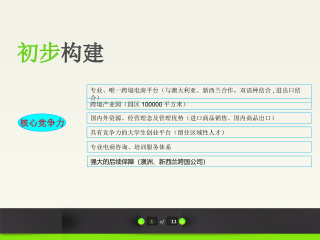
 2025-01-09 27
2025-01-09 27 -
跨境电商方案范文VIP免费
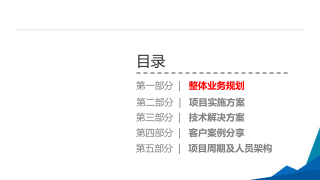
 2025-01-09 14
2025-01-09 14 -
创业计划书VIP免费
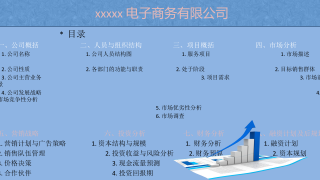
 2025-01-09 18
2025-01-09 18 -
xx生鲜APP计划书VIP免费

 2025-01-09 12
2025-01-09 12 -
跨境电商创业园商业计划书(盈利模式)VIP免费
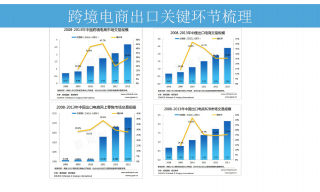
 2025-01-09 8
2025-01-09 8 -
跨境电商计划书VIP免费
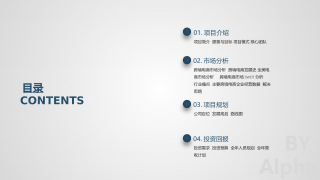
 2025-01-09 13
2025-01-09 13 -
绿色食品电商平台项目计划书VIP免费

 2025-01-09 22
2025-01-09 22 -
农产品电子商务商业计划书VIP免费

 2025-01-09 8
2025-01-09 8 -
农村电商平台商业计划书VIP免费
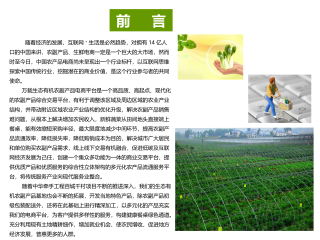
 2025-01-09 13
2025-01-09 13 -
生鲜商城平台商业计划书VIP免费
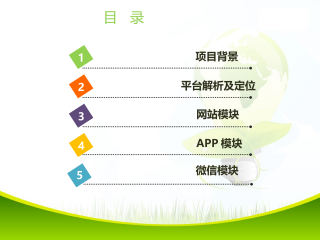
 2025-01-09 21
2025-01-09 21
作者:牛悦
分类:高等教育资料
价格:15积分
属性:105 页
大小:5.51MB
格式:PDF
时间:2025-01-09


